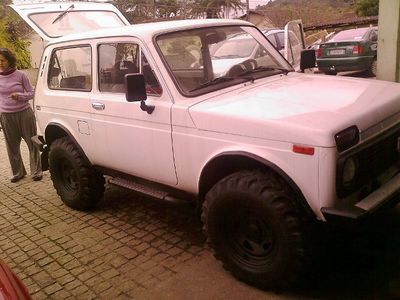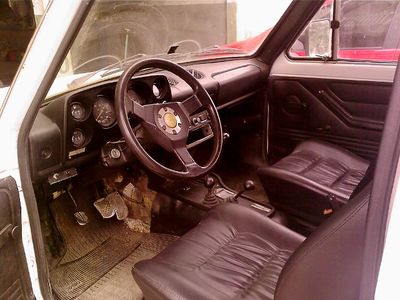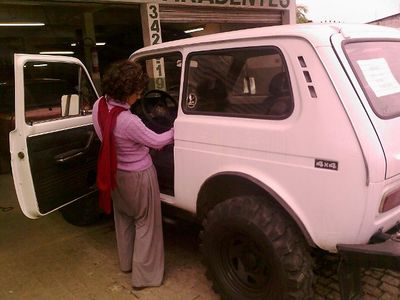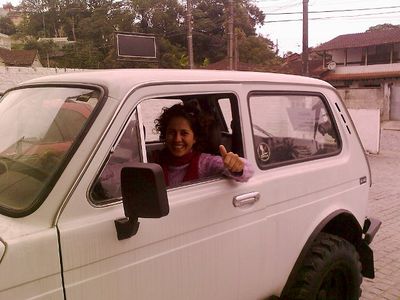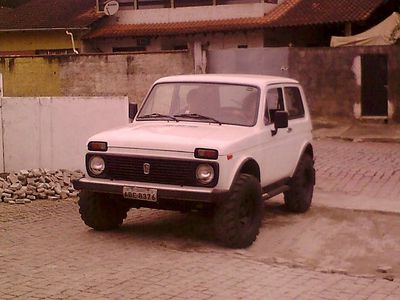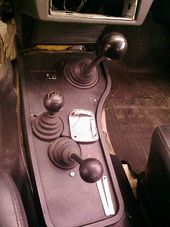Lada Niva
We bought a Lada Niva today as we need a rugged car for accessing our land which is at the end of 20km of dirt road and is not accessible with a normal family car in bad weather. Most Lada's have a bad reputation, but the Niva is the exception and it has many features which make it a perfect choice for our situation.
- It has very simple mechanics that make it about as good as possible for people who aren't professional mechanics to fix it themselves.
- It has no complex or sensitive electronic components making it immune to solar flares and EMP (and also contributing to independence for fixing it)
- It has excellent off-road performance, out-performing many models that are three or four times the price.
The Niva (a.k.a VAZ 2121) was described by its designers as a “Renault 5 put on a Land Rover chassis.” It was Lada's first non-Fiat based model. Much of its mechanicals are carried over from the Fiat based Lada models, though the body, four-wheel drive system, and front suspension were designed by Lada. Production began in 1977 and continues today (as of 2012) with only minor changes to the engine, rear hatch design, and interior trim levels.
In basic form, the Niva has a carbureted 1.6-litre overhead cam four-cylinder petrol engine producing 54kW (72hp) and 126N·m, a four- or five-speed manual transmission, and full-time four-wheel drive. The four-wheel drive system employs three differentials (centre, front and rear), similar to manual-transmission Toyota FJ Cruisers. There are no locking hubs. The transfer case involves a high/low range selector lever and a central differential lock lever. Low range can be selected with the centre differential locked or unlocked. The original Niva has a maximum speed of around 130kph, and can cruise at 90kph while consuming petrol at 8.25L per 100km. Its towing capacity is rated for up to 860kg.
Our Niva runs on alcohol instead of petrol or diesel which means that we can make our own fuel if (when) petrol prices become impractically high, or the supply-chain distribution system breaks down due to economic issues rendering gas stations useless. All in all, the Lada Niva is one of the best post-apocalyptic vehicles on the market!
Contents
Buying the car
On our land
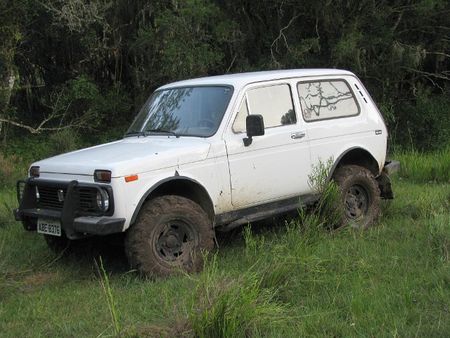
|
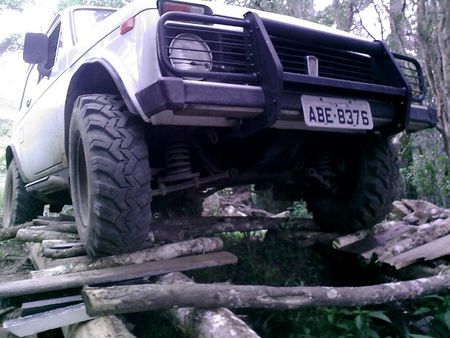
|
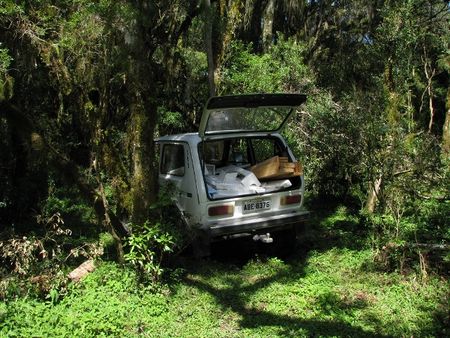
|
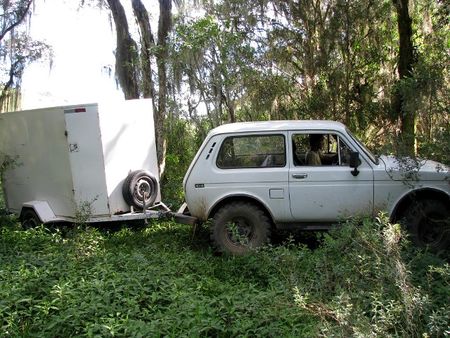
|
Gambiarra
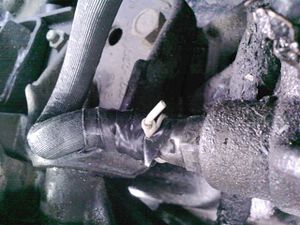
|
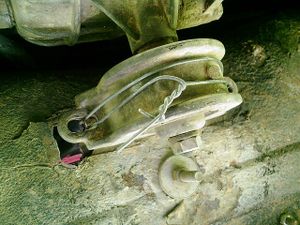
|
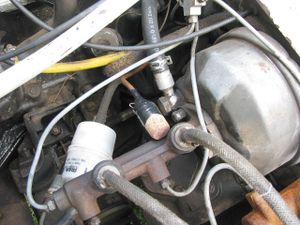
|
Replacing the slave clutch cylinder barrel
The replacement procedure wasn't too bad, first I familiarised myself with the parts involved by checking some of our Niva manuals, and watched a couple of videos on Youtube about replacing cylinder barrels (I couldn't find any specifically for Lada Niva, but the general procedure's the same for most cars). Then I did the procedure, it looks to me like there was actually nothing wrong with the old one, it was just installed badly making the movement of the arm force the rubber grommet to slide away from its proper position on the cylinder piston onto the thread allowing the fluid to leak. I put the new one in with the position of the arm slightly closer to avoid the same thing occurring again.
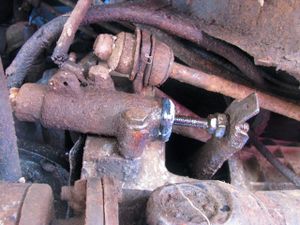
|
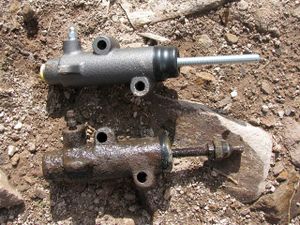
|
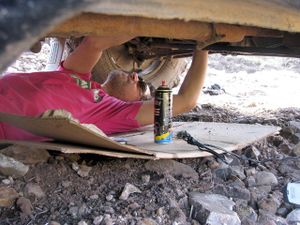
|
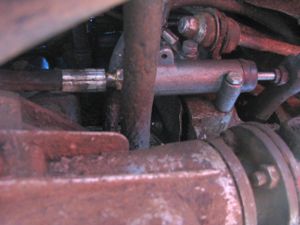
|
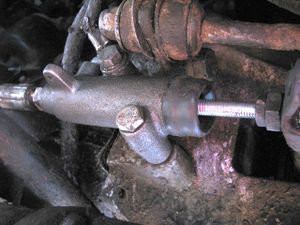
|

|
The lower bolt wouldn't screw in tightly because the thread was rusted out in the hole for it in the chassis, so the next day I took it out and instead put in a plastic anchor used for screwing into concrete and used a screw and washer instead of the bolt. The engine may get too hot and melt the anchor though in which case I'll try using some high-temperature hose for the anchor and if all else fails I guess I'll have to drill the hole out a little bigger and put a new thread in it for the next larger size of bolt.
I also adjusted the clutch pedal screw (above the clutch pedal under the steering wheel) to minimise the distance the pedal returns to when released as only about the last half of the clutch pedal action was doing any work.
Replacing the idler arm
The next thing I need to do is replace the idler arm. We took the Niva in to have the wheels aligned some time back and they said that we really needed to order a new idler arm and get it replaced before too long. The new one arrived a month or so back and we hadn't got round to taking it to the mechanic to put in. But now that I've successfully replaced the clutch cylinder I feel like I should have a go at replacing the drop arm myself as well.
This procedure is a fair bit more complicated than the cylinder barrel though as there are some very difficult ball pins to remove. They should really be removed with a special tool, but I've seen a few pics and videos of people doing with G-clamps or jacks. The pin needs to be clamped together so that when the nut is undone the powerful spring inside doesn't fire the pin out like a bullet.
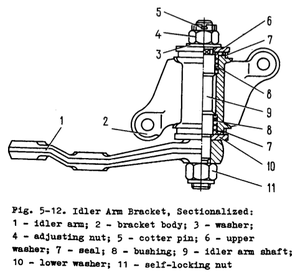
|
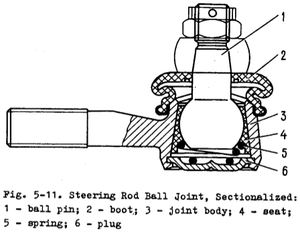
|
Alternative products
- Clutch and brake fluid prior to DOT3 was mainly composed of castor oil and alcohol (Óleo de rícino). See this for in depth details about brake fluids.
Resources
- Wikipedia Lada Niva page
- Lada Niva UK - excellent Niva resources (e.g. all manuals at end of page)
- Baxter's Niva Newbies Guide
- Baxter's main resources list
- Lada UK Forum - Plenty of Niva discussion; UK based, but plenty of international participation, especially from the antipodes
- Difflock - The other English speaking Niva forum; also caters for other breads as well, and many general off-road driving topics
- Niva.ru - English & Spanish translations of Russian FAQs
- Niva Adventure - Lots of modifications and forum (French, some English content)
- Navigatsioo Nitehnika - Estonian Niva crew who did what looks like a cross between trials & orienteering
- Parque 4x4 - A comprehensive Niva site in Spanish, plenty of tech, modifications, & good images; They're into long range & extreme Niva driving
- Gadgetboy's site - (formerly www.turbo-nutter.com) GB's on-going build & modifications diary, includes full Niva 1600 & 1700 manuals etc
- Good article about alternators and voltage regulator principles
- Russian repair manual - has the original hi-res colour pics
